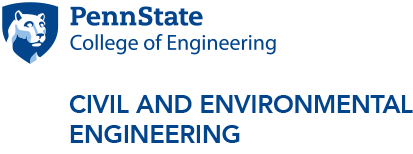Fire and Water
Abstract:
Much of the Western USA relies heavily on water supplies from mountain watersheds. These watersheds are increasingly being threatened by wildfire, which can have substantial effects on watershed hydrology and water quality.
Fire suppression in many of these watersheds has led to historically high tree densities which alter the water balance, potentially reducing the amount of water left to flow downstream and making the forests themselves vulnerable to drought. The Illilouette Creek Basin (ICB) in Yosemite National Park and Sugarloaf Creek Basin (SCB) in Sequoia and Kings Canyon National Parks are part of a unique experiment in the Sierra Nevada. While fires were suppressed in these watersheds for many years, fifty years ago managers chose to allow most naturally-ignited fires in these wilderness areas to burn. These fires have reduced forest cover while increasing the area covered by meadows. Computer simulations, field measurements, and remote sensing all suggest that this change in tree cover has led to higher streamflow, more water stored underground, and deeper snowpack. These hydrologic impacts are greater in the less arid and more frequently burned ICB compared to SCB, and strongest in years with above-average precipitation. These fire-related changes have also led to the remaining trees being healthier, especially during drought years.
Wildfire-caused changes in watershed hydrology can also lead to both short- and long-term impacts on water quality. The loss of canopy vegetation, together with changes in soil properties, can lead to increased overland flow during rainfall and flooding, erosion, and the movement of sediment, ash, and debris to surface water. The range of water-quality effects after wildfire varies from watershed to watershed, from no noticeable change to large increases in the amount of sediment, nutrients, metals and other constituents in surface waters. Water providers and land managers have a need to effectively plan for, prevent, and mitigate impacts on water supplies. Critical gaps in our understanding of drivers and processes that determine post-wildfire impacts on water supplies must be resolved and incorporated into models and assessments. This presentation will describe recent advances in understanding critical drivers of post-fire water quality, with a focus on precipitation regime and legacy land use.
Bio: Gabrielle Boisrame has a B.A. in Applied Mathematics from Whitman College, and a Ph.D. in Civil and Environmental Engineering from U.C. Berkeley. Her dissertation examined the water balance impacts of restoring a natural fire regime to a small watershed in the Sierra Nevadas. After graduation, Dr. Boisrame worked as an environmental scientist for the Delta Stewardship Council, a California State Agency. She is currently an assistant research professor at the Desert Research Institute. Her work uses a combination of remote sensing, fieldwork, modeling, and statistical data analysis to study the impacts of changing landscapes and climate on water resources of the western United States.
Bio: Sheila Murphy is a Research Hydrologist with the USGS Water Resources Mission Area, and has worked for the USGS in Boulder, Colorado for over 20 years. Sheila has a bachelor’s degree in geology from the University of Michigan and a master’s degree in geochemistry from the Pennsylvania State University. She is an affiliate scientist with CU’s Institute of Arctic and Alpine Research. Sheila’s research focuses on how disturbances (such as wildfire, floods, and land use change) alter watershed response, water quality, and water quantity. In 2023 Sheila received a Superior Service Award from the Department of the Interior for making fundamental advancements in the understanding of water quality impairment following wildfires.
Event Contact: Li Li



